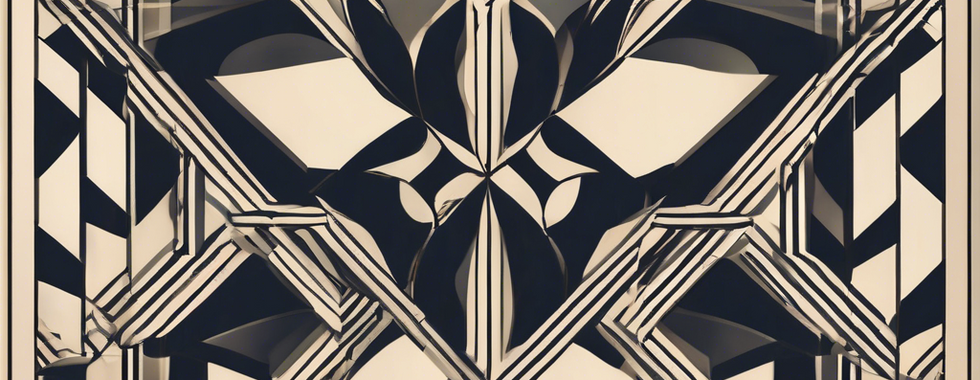Modern architecture is more than just creative designs; it's infused with symbols that carry deeper meanings. These symbols are not arbitrary; many originate from ancient civilizations and reflect a legacy of thought that has persisted through time. This exploration reveals the hidden symbols in contemporary architecture and traces their connections to past cultures.

The Universality of Symbols
Symbols have historically acted as a universal language, transcending cultural barriers. In architecture, they convey aesthetic beauty alongside deeper meanings related to cultural identity and shared values. For instance, the circular shape, prevalent in many ancient traditions, signifies unity and eternity. From ancient Greek architecture to Native American formations, circles create a sense of continuity.

Today, modern structures like domes and rotundas utilize circular designs, linking them to this enduring symbolism. The iconic St. Peter’s Basilica in Vatican City offers a striking example, with its central dome representing a divine connection, echoing similar features in ancient architecture.
Examples of Ancient Influence in Modern Designs
The Pyramid: A Timeless Form
The pyramid, known for its precise geometry, symbolizes strength and ascension. The Great Pyramid of Giza serves as the quintessential example, highlighting the engineering skill of the ancient Egyptians.
In the modern context, structures like the Louvre Pyramid in Paris, designed by I.M. Pei, bridge ancient and contemporary design. This glass pyramid not only contrasts with the historical Louvre but also evokes the same feelings of aspiration and enlightenment found in ancient designs. The integration of light and space in Pei's work demonstrates that traditional forms can inspire innovation and creativity.

The Colonnade: Echoes of Ancient Greece
The colonnade is a feature rooted in ancient Greece, symbolizing order and grandeur. Greek temples often included colonnades, fostering a communal atmosphere where people could gather.

Modern examples, like the National Gallery in London, employ colonnades to invite interaction and connection. The colonnade creates a welcoming transition between outdoor and indoor spaces while maintaining a sense of dignity inspired by ancient Greek architecture. This approach shows how classical elements can enhance functionality and human connection in today’s designs.
Geometric Patterns: A Language of Their Own
Geometric patterns have enriched architecture since ancient times. Cultures like the Islamic and Aztec civilizations used intricate designs to express spiritual narratives and cultural significance.
A notable modern example is the Al Bahar Towers in Abu Dhabi, which feature a façade of shading screens that open and close according to sunlight. This design not only provides visual appeal but also highlights themes of sustainability and energy efficiency. By blending ancient design principles with modern technology, the towers stand as a testament to how geometric patterns can address contemporary challenges while honoring historical roots.

The Role of Nature in Symbolism
Nature has inspired architects for centuries, and ancient societies often embraced natural forms in their designs. Many ancient structures mimicked organic shapes to create harmony with their surroundings, fostering a sense of community and connection.
Modern architects increasingly embrace biophilic design principles. The Eden Project in the UK exemplifies this trend with its geodesic structures that reflect natural forms. This approach not only pays homage to nature but also creates a functional educational space. Such contemporary designs underscore the lasting impact of ancient reverence for nature on modern architecture.
The Narrative of Symbolism
Architecture narrates stories through symbols woven into its fabric. Designers who incorporate symbolic elements create spaces that resonate emotionally and spiritually.
Sacred geometry, found in buildings from historic cathedrals to modern community centers, cultivates meaningful spaces. The golden ratio, derived from ancient mathematics, continues to guide artists and architects in achieving aesthetic balance. This understanding enhances how we perceive and interact with our surroundings, demonstrating the ongoing influence of ancient wisdom.
Reflection on Architecture's Symbolism
Understanding the symbolic language of modern architecture is essential for appreciating its depth. The secrets embedded in today's designs weave together influences from ancient societies, enriching our connection to history and culture.
Through pyramids, colonnades, geometric patterns, and the integration of nature, architects today perpetuate a tradition of storytelling through symbolism. As architectural designs evolve, they reflect humanity's shared journey through time. Observing the built environment can provoke curiosity about the stories these symbols convey, encouraging us to reconnect with the past and consider the significance behind the spaces we occupy.

FRANCO ARTESEROS....















Comments